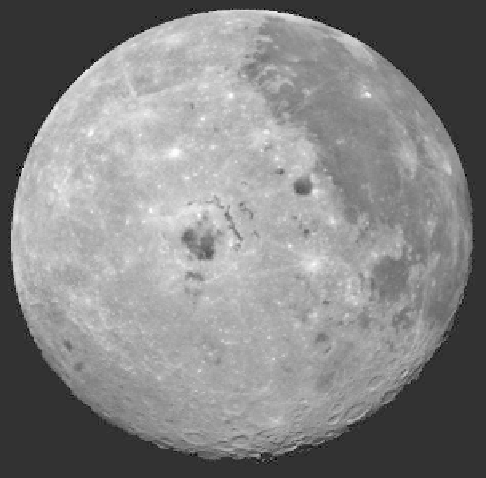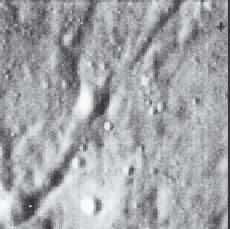Geology Reference
In-Depth Information
(a)
(b)
Figure 4.13. The Soviet Lunokhod 1 was the
first robotic rover
used in planetary exploration. It was carried to the Moon by Luna
17 and then traveled more than 10 km across the western Mare
Imbrium.
Figure 4.15. (a) Dark-halo craters, as seen here in the Orientale
basin, are impacts that penetrate through thin mantles of high-
albedo material into underlying darker material, which is
excavated as ejecta; these craters are ~600m in diameter (NASA LO
IV 195-H2). (b) The diagrams illustrate how dark-halo craters can
be used to infer the presence of buried mare deposits (courtesy of
B. Ray Hawke).
Moon and showed that the surface compositions are
much more diverse than had been revealed by previous
missions, re
ecting the complex evolution of the Moon.
The Clementine team also wished to test the hypothesis
that ice is present in some areas of the Moon. The con-
cept is that parts of some polar craters are permanently
shaded, precluding solar heating. On the assumption that
cometary impacts would implant ice in these areas, over
several billion years of lunar history substantial ice could
accumulate and be preserved. The Clementine radar
system was focused on some of these areas with the
Figured 4.14. A Galileo image of the lunar far side, showing the
Orientale basin (center), Oceanus Procellarum (upper right), and part
of the South Pole
-
Aiken basin (lower left), obtained by the
flyby of
the spacecraft in 1990 (NASA PIA00077).
ultraviolet
-
visible CCD camera, a near-infrared camera,
a long-wavelength infrared camera, a laser altimeter, a
radar system, and a high-resolution imager. Placed in a
slightly inclined polar orbit, the remote sensing data
provided the
first near-global multispectral data for the








